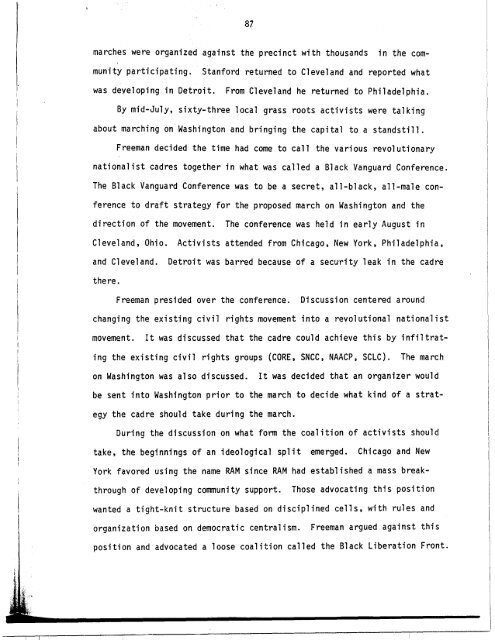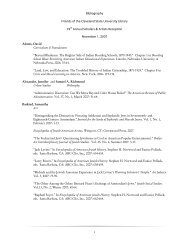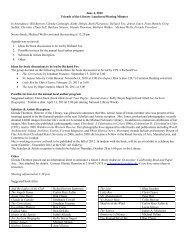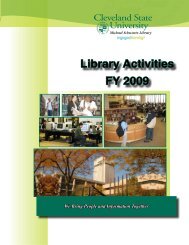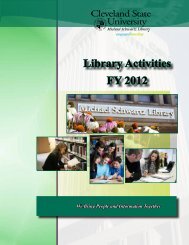revolutionary action movement (ram) - Michael Schwartz Library
revolutionary action movement (ram) - Michael Schwartz Library
revolutionary action movement (ram) - Michael Schwartz Library
Create successful ePaper yourself
Turn your PDF publications into a flip-book with our unique Google optimized e-Paper software.
87<br />
marches were organized against the precinct with thousands in the community<br />
participating . Stanford returned to Cleveland and reported what<br />
was developing in Detroit . From Cleveland he returned to Philadelphia .<br />
By mid-July, sixty-three local<br />
grass roots activists were talking<br />
about marching on Washington and bringing the capital to a standstill .<br />
Freeman decided the time had come to call the various <strong>revolutionary</strong><br />
nationalist cadres together in what was called a Black Vanguard Conference .<br />
The Black Vanguard Conference was to be a<br />
secret, all-black, all-male conference<br />
to draft strategy for the proposed march on Washington and the<br />
direction of the <strong>movement</strong> .<br />
The conference was held in early August in<br />
Cleveland, Ohio .<br />
Activists attended from Chicago, New York, Philadelphia,<br />
and Cleveland . Detroit was barred because of a security leak in the cadre<br />
there .<br />
Freeman presided over the conference .<br />
Discussion centered around<br />
changing the existing civil rights <strong>movement</strong> into a revolutional nationalist<br />
<strong>movement</strong> .<br />
It was discussed that the cadre could achieve this by infiltrat<br />
ing the existing civil rights groups (CORE, SNCC, NAACP, SCLC) . The march<br />
on Washington was also discussed .<br />
It was decided that an organizer would<br />
be sent into Washington prior to the march to decide what kind of a strategy<br />
the cadre should take during the march .<br />
During the discussion on what form the coalition of activists should<br />
take, the beginnings of an ideological split emerged . Chicago and New<br />
York favored using the name RAM since RAM had established a mass break<br />
through of developing community support .<br />
Those advocating this position<br />
wanted a tight-knit structure based on disciplined cells, with rules and<br />
organization based on democratic centralism .<br />
Freeman argued against this<br />
position and advocated a loose coalition called the Black Liberation Front .


